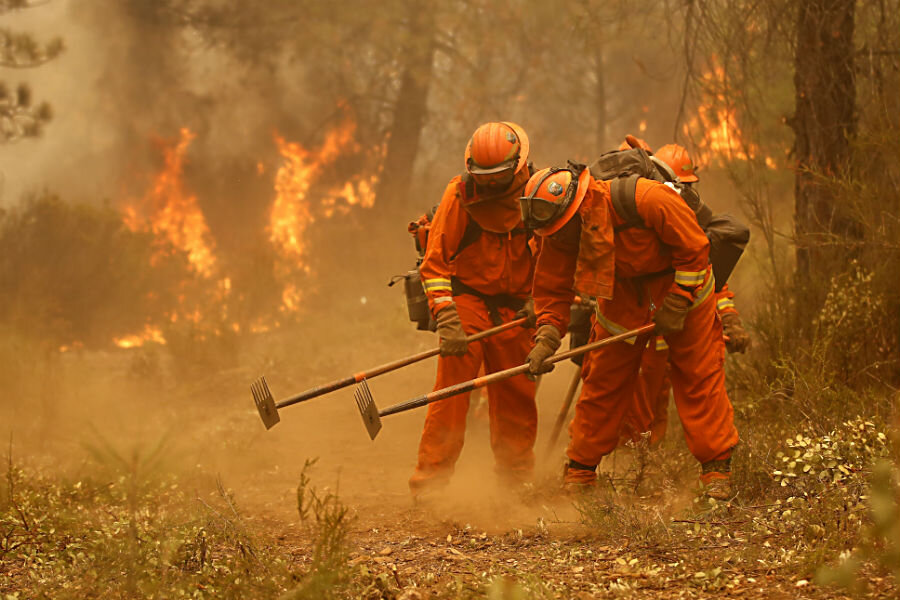Why California won't be fighting fires with violent inmates
Loading...
| Sacramento, Calif.
California corrections officials dropped a plan to include prisoners with violent backgrounds in the nation's largest and oldest inmate firefighting unit, a day after the proposal was first reported by The Associated Press.
The state still plans to expand the program to include inmates who have up to seven years left to serve on their sentences, instead of the current five years, Department of Corrections and Rehabilitation spokesman Jeffrey Callison told the AP.
But as for considering inmates who have been convicted of violent crimes, "We will not be changing that," he said. "We're not looking to expand the list of crimes that inmates have committed when considering who is eligible for fire camp service."
Monday's story drew nationwide attention as California endures four years of drought and a deadly fire season. Public safety concerns were raised by critics including the union representing state firefighters who oversee the inmates while they are fighting fires.
The plan was dropped on Tuesday but Callison denied that the publicity killed it.
"Nothing was finalized, and even without the stories who knows what might have emerged?" he said.
The department continues to search for ways to increase the pool of potential firefighters, he said. The number has been falling in recent years because lower-level offenders are being sent to county jails instead of state prisons.
Currently about 3,800 inmates assist professional firefighters in California, but that is down from about 4,400 in previous years.
The department considers only inmates with no history of violent crimes, but had proposed adding inmates convicted of violent offenses such as assaults and robberies if they had attained a minimum-security classification after years of good behavior.
Corrections spokesman Bill Sessa had told the AP the proposal was in the final review stage within his department. It had not yet been sent to the Department of Forestry and Fire Protection, which said it also would have had to approve the changes.
The two agencies formed a committee this summer to consider how to keep the firefighter program adequately staffed. The committee is considering using inmates with longer sentences left to serve, said CalFire spokeswoman Janet Upton, but had not been asked to consider using inmates with violent backgrounds.
"They listened to the public sentiment, which is very well appreciated," said Mike Lopez, president of the union representing state firefighters who oversee inmates at fire scenes. "It sounds like now they're taking a step back and reevaluating their process, which is a good thing."
The AP reported that even firefighters serving time for nonviolent crimes have committed in hundreds of assaults and batteries, along with weapons possessions, indecent exposures and other crimes in the last 10 years. Officials said the rate is much lower than in higher-security prisons.
The inmate firefighters are guarded by a few correctional officers while in the state's 43 unfenced camps, but while fighting fires are overseen only by unarmed CalFire captains. They use hand tools to build fire breaks through terrain that is inaccessible to bulldozers, and made up about one of every five state, federal and local firefighters battling recent blazes.
Meanwhile, more than 400 firefighters are battling a wildfire that has been burning out of control through thick brush in Northern California's San Benito County since Monday.
No injuries were reported, and no structures were threatened by the blaze near Hollister, about 40 miles northeast of Monterey, the California Department of Forestry and Fire Protection said.
Crews using bulldozers began battling the fire around 4 p.m. Monday when it was 30 acres. It had charred about 600 acres by Tuesday evening, when it was 10 percent contained.







